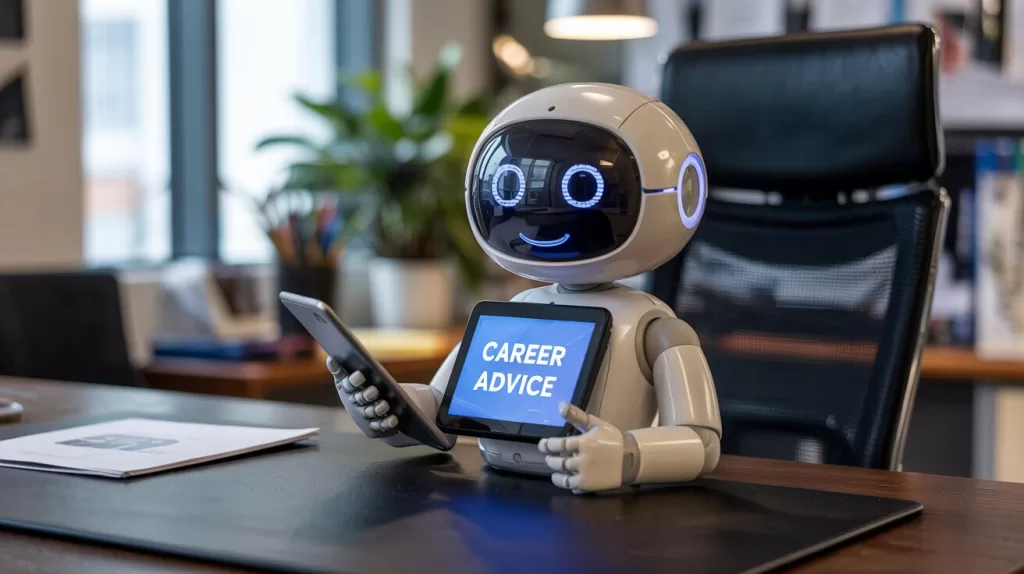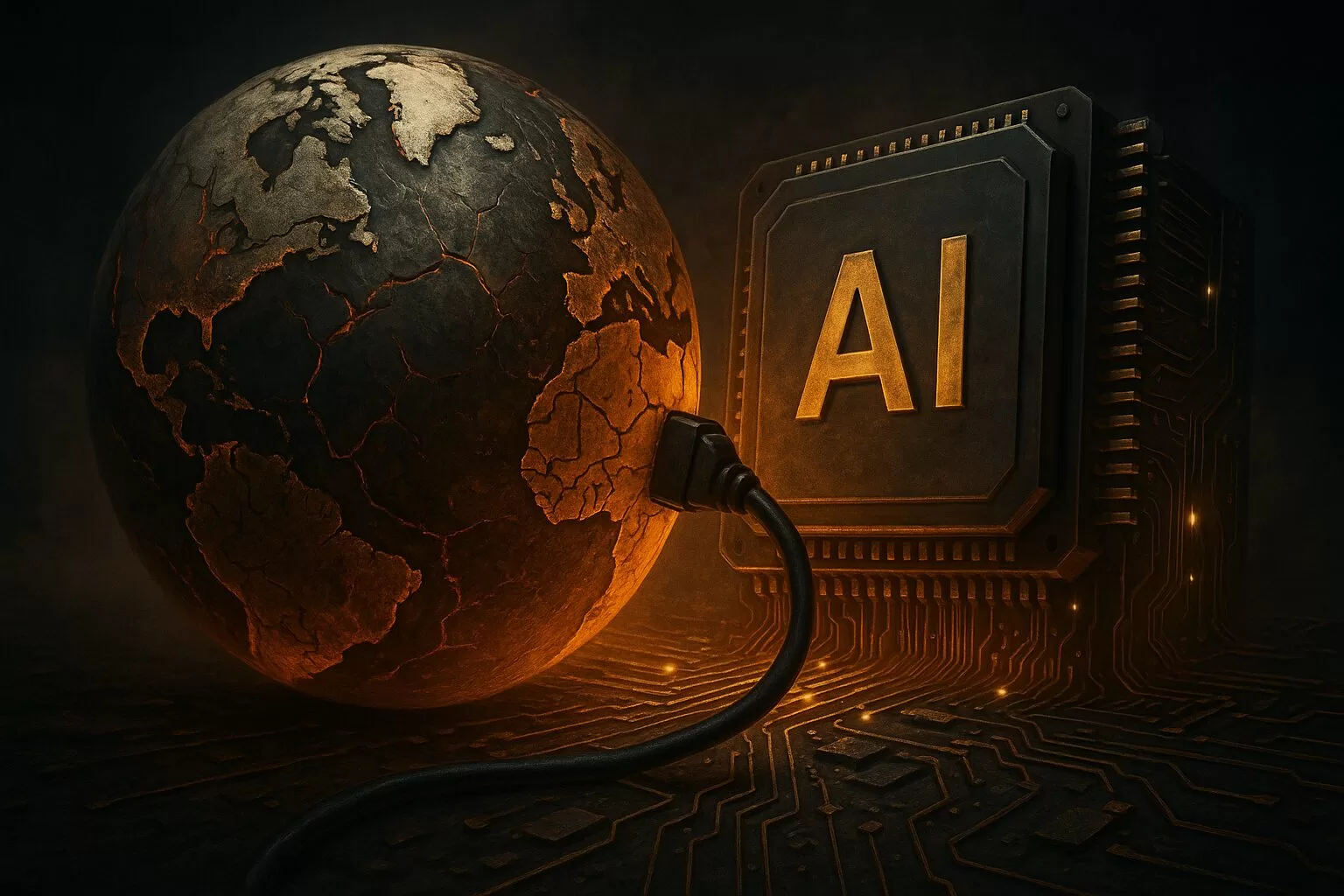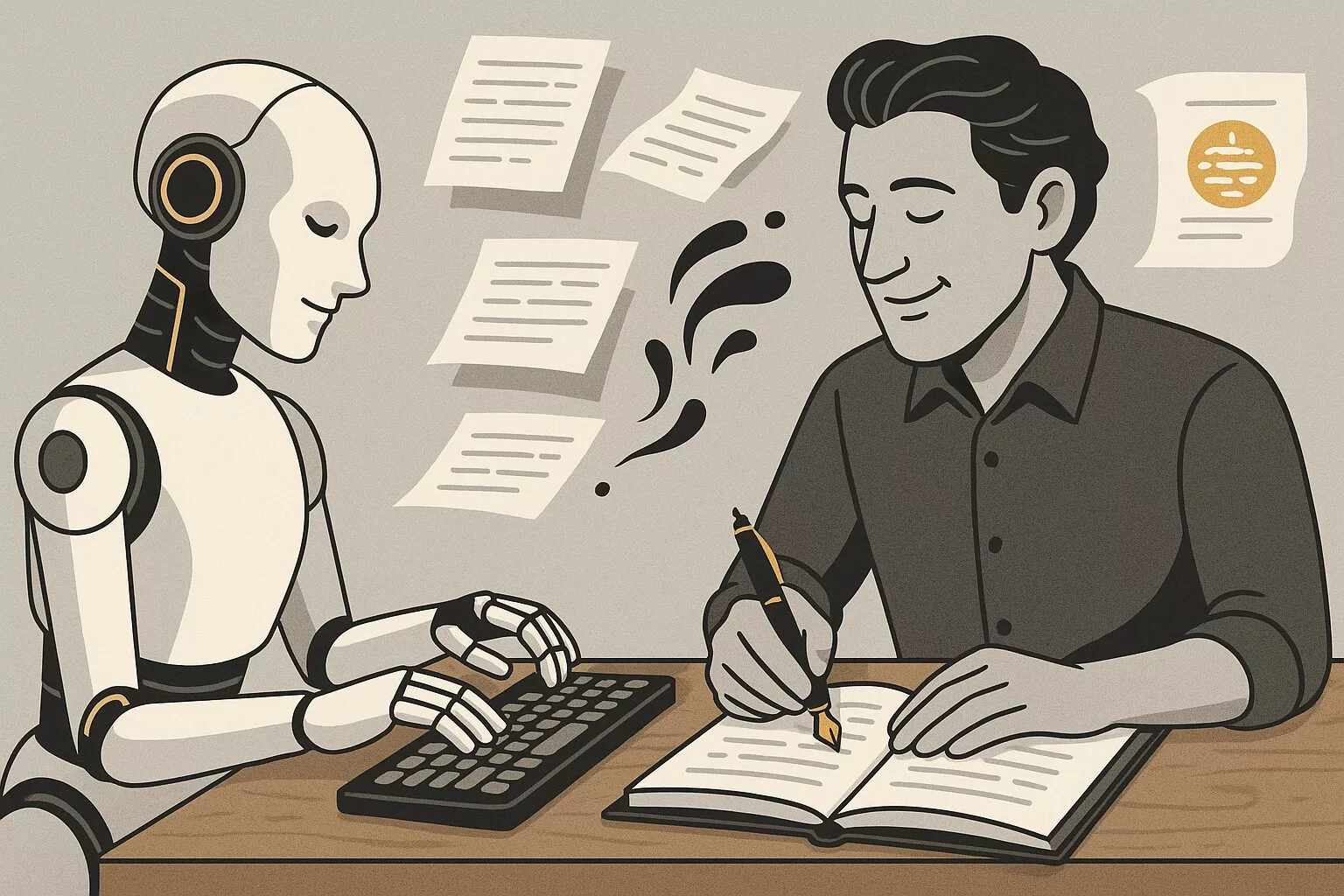Life
AI Career Guide: Land Your Next Job with Our AI Playbook
Discover how to leverage AI for your career success. Our AI career guide offers tips on CV writing and interview preparation.
Published
2 months agoon
By
AIinAsia
- AI transforms every step of your job hunt.
- From CV writing to interview prep—turning a stressful, uncertain process into strategic clarity.
- While AI won’t directly secure you a job, it will significantly boost your chances.
- Welcome to Your AI Career Playbook.
Introduction: Making AI Your Personal Career Coach
Let’s be honest: finding a great job in Singapore—or anywhere in Asia—is no cakewalk. The market moves quickly, employers want more specialised skills than ever, and getting your CV past automated scanners feels like navigating a digital minefield.
What if you had an always-on career advisor that could help you write perfect applications, prep you for interviews, and even help you network? It’s not a fantasy—it’s artificial intelligence. AI tools are now sophisticated enough to give you the career edge you need. By the end of this guide, you’ll have a clear playbook for harnessing AI to land your next big role.
Let’s dive in!
Can AI Actually Land You Your Next Job—or is That Just Hype?
Let’s get real: AI isn’t about replacing your effort, but about amplifying your abilities. With AI, you can:
- Craft a customised, keyword-rich CV that sails through Applicant Tracking Systems (ATS).
- Optimise your LinkedIn profile instantly for maximum visibility.
- Identify emerging AI-driven job roles and skills employers actually care about.
- Anticipate and ace your interviews using AI-generated questions and answers.
AI doesn’t just automate tedious tasks; it empowers you to compete smarter, especially in competitive markets like Singapore, Jakarta, or Hong Kong.
AI-Powered Career Prep: Step-by-Step Playbook
Here’s a comprehensive guide to turbocharging your career search using AI, including practical examples, recommended tools, and easy-to-use prompts.
Step 1: Crafting an Irresistible CV with AI
Your CV typically has less than 10 seconds to impress a recruiter. It must pass through Applicant Tracking Systems (ATS) before it ever reaches human eyes. AI tools can optimise your CV to ensure it’s keyword-rich, tailored precisely to each role, and visually appealing.
AI Tools to Use:
- ChatGPT (OpenAI) – powerful generative AI for rewriting CVs.
- Kickresume AI – professional CV builder with AI-driven wording suggestions.
- TealHQ – provides ATS-friendly formatting and skill recommendations.
How to Use These Tools:
- Input your current CV.
- Use targeted prompts to optimise content.
Prompt Examples:
Rewrite my CV to highlight experience in AI-driven marketing analytics for a senior digital strategist role at DBS Bank in Singapore.
Optimise my CV for ATS, targeting a software engineering position specialising in AI at Grab.
Spend time refining outputs; personalisation is essential.
Step 2: Supercharging Your LinkedIn Profile with AI
LinkedIn is your professional showcase. Recruiters across Asia heavily rely on LinkedIn to discover and vet candidates. AI tools can instantly elevate your profile, making it searchable, engaging, and compelling.
AI Tools to Use:
- Taplio – LinkedIn profile optimiser powered by AI.
- LinkedIn’s built-in AI assistant – available in LinkedIn Premium for profile enhancement.
- Jasper.ai – excellent for creating engaging summaries and posts.
Prompts to Try:
Write a compelling LinkedIn headline showcasing my expertise in AI-driven fintech analytics for a managerial role in Singapore.
Create an engaging LinkedIn ‘About’ section focusing on my success using AI to drive digital transformation in APAC.
Make sure your profile authentically reflects you while leveraging AI-generated enhancements for maximum impact.
Step 3: AI-Driven Job Hunting: Find Perfect Roles Faster
Stop endlessly scrolling through vague job ads. AI can streamline the job search, filtering through thousands of postings and pinpointing roles perfectly matched to your skills.
AI Tools to Use:
Google’s Gemini – summarise key job requirements rapidly.
Effective Prompts:
Find and summarise 5 recent AI-related digital marketing job openings in Singapore that match my profile.
What are three critical skills needed for a senior data analyst role at Shopee based on recent job postings?
Use these AI tools weekly to ensure you’re always applying to roles most aligned with your skills.
Step 4: Effortless Networking Using AI
Networking remains essential, especially in relationship-focused business cultures like Singapore and Hong Kong. AI takes away the awkwardness, helping you craft concise, professional messages instantly.
AI Tools to Use:
- Crystal – personality-driven messaging based on recipients’ LinkedIn profiles.
- Lavender.ai – powerful for writing persuasive cold emails.
- GrammarlyGO – ensures your messages are polished and professional.
Prompt Ideas:
Draft a LinkedIn connection message for the Head of AI at SQREEM Technologies, highlighting my interest in AI-driven advertising solutions.
Compose a brief, engaging introductory email to the talent acquisition manager at TotallyAwesome, mentioning my expertise in digital marketing for youth brands.
Leverage these messages for immediate relationship-building impact.
Step 5: Acing Interviews with AI-Powered Preparation
AI tools can simulate real-world interviews, predicting specific questions and generating strong, persuasive answers, greatly increasing your interview confidence.
AI Tools to Use:
- ChatGPT – instantly creates practice questions and tailored responses.
Example Prompts:
List 10 likely interview questions for an AI product management role at Carousell, including challenging technical questions.
Suggest impactful answers for behavioural interview questions for a senior analytics role at Lazada.
How to Use These Tools:
- Input the job description and your CV.
- Practise with AI-generated questions and refine your answers.
Example Prompt:
List 10 likely interview questions for an AI product management role at Carousell.
Regular AI-driven interview rehearsals build the confidence you’ll need on interview day.
Step 6: AI-Assisted Salary Negotiation
Negotiating your salary can be uncomfortable—but essential for your financial growth. AI can provide you with the insights, confidence, and language to secure the best possible offer without feeling awkward.
AI Tools to Use:
- Payscale – Uses AI-driven data to show accurate salary benchmarks.
- Levels.fyi – AI-backed salary comparisons across tech roles globally.
- ChatGPT – Assists with crafting persuasive negotiation dialogues.
How to Use These Tools:
- Check salary ranges based on role, location, and experience.
- Prepare negotiation talking points with AI-generated prompts.
Prompt Examples:
Suggest three effective negotiation arguments to present to my employer for an AI Product Manager position in Singapore, considering current market salaries.
Write a polite but firm salary negotiation email asking for a 15% increase based on market research and my experience in AI analytics.
This ensures you approach negotiations informed, confident, and professionally.
Step 7: Perfect Follow-Up Emails Using AI
A timely, thoughtful follow-up email can significantly impact hiring decisions. AI helps craft follow-ups that reinforce your suitability without sounding desperate.
AI Tools to Use:
- GrammarlyGO – refines your professional tone.
Prompt Example:
Write a professional, concise follow-up email thanking the interviewer from DBS Bank Singapore, reiterating my strong interest and qualifications for the AI analyst position.
Send promptly post-interview to leave a memorable impression.
Step 8: AI-Enhanced Skills Development and Certification
Continual skill development is vital to stay competitive, especially in AI-centric roles. AI-driven platforms help you identify skill gaps and recommend tailored courses to keep your expertise sharp and attractive to employers.
AI Tools to Use:
- Coursera Skillsets – Personalised AI-based learning path recommendations.
- LinkedIn Learning – AI-driven recommendations based on your professional profile.
How to Use These Tools:
- Provide your career interests and existing skills.
- Receive personalised course recommendations to bridge gaps effectively.
Prompt Examples:
Suggest 3 online certifications or short courses that will significantly enhance my profile for a career as an AI-driven data analyst in Singapore.
Identify 5 trending AI-related skills I should learn in 2025 to be highly competitive in the fintech sector.
Consistent skill updates significantly enhance your marketability.
Step 9: Using AI to Monitor Your Professional Brand
Your personal brand matters—especially when employers frequently vet online profiles. AI tools proactively monitor your digital footprint, ensuring your online reputation supports your professional goals.
AI Tools to Use:
- BrandYourself – AI-driven online reputation management.
- Mention.com – Monitors your digital presence and mentions using AI.
- Google Alerts – AI-enhanced alerts about new online mentions.
How to Use These Tools:
- Set up AI-driven alerts for your name, profession, and industry keywords.
- Regularly review insights to maintain or enhance your professional online image.
Prompt Examples:
How can I optimise my online professional presence to appeal to recruiters in AI-driven roles in Singapore?
Suggest effective strategies to build a strong online reputation as an expert in AI analytics.
An AI-supported professional brand ensures you stay attractive to prospective employers.
Step 10: AI-Powered Job Application Tracking and Organisation
Keeping track of multiple job applications can quickly become overwhelming. AI-powered organisational tools streamline and manage this complexity, giving you clear visibility at every stage of your job hunt.
AI Tools to Use:
- Huntr – Tracks your job application pipeline with AI insights.
- Notion AI – Customisable database and AI-powered task management.
How to Use These Tools:
- Enter job details, deadlines, and application status into your chosen tool.
- Use automated reminders to follow up on applications and interviews.
Prompt Examples:
Provide a clear workflow for organising job applications and interview follow-ups using Notion AI.
Recommend the best ways to stay organised and effective while managing multiple job applications simultaneously.
Organisation is crucial—let AI keep your job hunt stress-free and systematic.
Step 11: AI-Enhanced Mental Wellbeing During Your Job Hunt
Job hunting is stressful. Maintaining your mental health is critical to your productivity and confidence. AI-based wellness apps provide personalised strategies to help manage stress effectively during your career transition.
AI Tools to Use:
- Headspace (AI-driven wellness plans) – Personalised meditation and mindfulness guidance.
- Wysa – AI chatbot providing emotional support and stress management.
How to Use These Tools:
- Regularly engage with AI-driven mental wellness apps.
- Practise stress management techniques specifically designed for career transitions.
Prompt Examples:
Suggest effective strategies for managing job-hunting anxiety, particularly related to AI and tech career transitions.
What are daily habits I can implement using AI-driven tools to maintain positivity during an extended job search?
Maintaining your mental wellbeing boosts your overall effectiveness and resilience.
Step 12: AI-Powered Career Pivot Planning

Considering a career pivot? AI can assist you by identifying transferable skills, suggesting appropriate new career paths, and crafting narratives that effectively communicate your value to recruiters.
AI Tools to Use:
- CareerExplorer – AI-driven insights to match your skills to new career options.
- FutureFit.AI – Career-pivot-focused AI insights.
How to Use These Tools:
- Enter your current experience, interests, and skills.
- Review AI-generated career pivot recommendations and plan next steps.
Prompt Examples:
Identify three alternative career paths suitable for someone with extensive marketing experience transitioning into AI-centric roles.
Write a persuasive personal statement for my CV explaining a career pivot from traditional banking to fintech and AI analytics.
AI can help make career transitions smoother, clearer, and more achievable.
Bonus Steps
1. AI-Powered Portfolio and Project Showcases
- Candidates increasingly require impressive online portfolios—especially crucial for creative, tech, or analytical roles.
- Tools:
- Canva AI (design-focused portfolios)
2. AI-Enhanced Video Interviewing
- Many companies now rely on AI-driven video interviews. Your readers should prepare specifically for this format.
- Tools:
- HireVue (AI-powered video interview practice)
3. AI-Driven Cover Letter Crafting
- Despite modern scepticism, cover letters still matter—especially for senior roles or competitive companies.
- Tools:
- ChatGPT (custom letter generation)
5 AI Mistakes to Avoid in Your Job Hunt
AI is powerful—but watch out for these pitfalls:
- Overreliance on AI: Always personalise AI-generated content.
- Ignoring Cultural Context: Ensure your prompts consider Asia-specific nuances.
- Copy-Paste Syndrome: Adapt AI outputs rather than copying verbatim.
- Privacy Negligence: Avoid sharing personal data with unsecured AI services.
- Accuracy Oversights: Always fact-check AI suggestions.
So, can AI actually land you your next job—or is that just hype?
The reality is nuanced. AI itself doesn’t offer job contracts—but it dramatically enhances every step of your job-seeking process. From perfecting your CV to providing negotiation insights, AI maximises your chances of landing your ideal role.
Take Action & Share Your Experience:
Have you tried these steps or prompts? Which AI tools worked best for you? Share your experience below—we’d love to hear your AI-powered job success stories!
Good luck, and happy AI-powered job hunting!
You may also like:
- How to Use ChatGPT
- How to Use ChatGPT and Impress Hiring Managers
- AI to the Rescue: Mastering Your LinkedIn Profile with ChatGPT
Author
Discover more from AIinASIA
Subscribe to get the latest posts sent to your email.
You may like
Life
The Dirty Secret Behind Your Favourite AI Tools
This piece explores the hidden environmental costs of AI, focusing on electricity and water consumption by popular models like ChatGPT. It unpacks why companies don’t disclose energy usage, shares sobering statistics, and spotlights efforts pushing for transparency and sustainability in AI development.
Published
2 days agoon
June 5, 2025By
AIinAsia
The environmental cost of artificial intelligence is rising fast — yet the industry remains largely silent. Here’s why that needs to change.
TL;DR — What You Need To Know
- AI systems like ChatGPT and Google Gemini require immense electricity and water for training and daily use
- There’s no universal standard or regulation requiring AI companies to report their energy use
- Estimates suggest AI-related electricity use could exceed 326 terawatt-hours per year by 2028
- Lack of transparency hides the true cost of AI and hinders efforts to build sustainable infrastructure
- Organisations like the Green Software Foundation are working to make AI’s carbon footprint more measurable
AI Is Booming — So Are AI’s Environmental Impact
AI might be the hottest acronym of the decade, but one of its most inconvenient truths remains largely hidden from view: the vast, unspoken energy toll of its everyday use. The focus keyphrase here is clear: AI’s environmental impact.
With more than 400 million weekly users, OpenAI’s ChatGPT ranks among the five most visited websites globally. And it’s just the tip of the digital iceberg. Generative AI is now baked into apps, search engines, work tools, and even dating platforms. It’s ubiquitous — and ravenous.
Yet for all the attention lavished on deepfakes, hallucinations and the jobs AI might replace, its environmental footprint receives barely a whisper.
Why AI’s Energy Use is Such a Mystery
Training a large language model is a famously resource-intensive endeavour. But what’s less known is that every single prompt you feed into a chatbot also eats up energy — often equivalent to seconds or minutes of household appliance use.
The problem is we still don’t really know how much energy AI systems consume. There are no legal requirements for companies to disclose model-specific carbon emissions and no global framework for doing so. It’s the wild west, digitally speaking.
Why? Three reasons:
- Commercial secrecy: Disclosing energy metrics could expose architectural efficiencies and other competitive insights
- Technical complexity: Models operate across dispersed infrastructure, making attribution a challenge
- Narrative management: Big Tech prefers to market AI as a net-positive force, not a planetary liability
The result is a conspicuous silence — one that researchers, journalists and environmentalists are now struggling to fill.
The stats we do have are eye-watering
MIT Technology Review recently offered a sobering benchmark: a 5-second AI-generated video might burn the same energy as an hour-long microwave session.
Even a text-based chatbot query could cost up to 6,700 joules. Scale that by billions of queries per day and you’re looking at a formidable energy footprint. Add visuals or interactivity and the costs balloon.
The broader data centre landscape is equally stark. In 2024, U.S. data centres were estimated to use around 200 terawatt-hours of electricity — roughly the same as Thailand’s annual consumption. By 2028, AI alone could push this to 326 terawatt-hours.
That’s equivalent to:
- Powering 22% of American homes
- Driving over 300 billion miles
- Completing 1,600 round trips to the sun (in carbon terms)
Water usage, often overlooked, is another major concern. AI infrastructure guzzles water for cooling, posing risks during heatwaves and water shortages. As AI adoption grows, so too does this hidden drain on natural resources.
What’s being done — and who’s trying to fix it
A handful of organisations are beginning to push for accountability.
The Green Software Foundation — backed by Microsoft, Google, Siemens, and others — is creating sustainability standards tailored for AI. Through its Green AI Committee, it champions:
- Lifecycle carbon accounting
- Open-source tools for energy tracking
- Real-time carbon intensity metrics
Meanwhile, governments are cautiously stepping in. The EU AI Act encourages sustainability via risk assessments. In the UK, the AI Opportunities Action Plan and British Standards Institution are working on guidance for measuring AI’s carbon toll.
Still, these are fledgling efforts in an industry sprinting ahead. Without enforceable mandates, they risk becoming toothless.
Why transparency matters more than ever for AI carbon emissions
We can’t manage what we don’t measure. And in AI, the stakes are immense.
Without accurate data, regulators can’t design smart policies. Infrastructure planners can’t future-proof grids. Consumers and businesses can’t make ethical choices.
Most of all, AI firms can’t credibly claim to build a better world while masking the true environmental cost of their platforms. Sustainability isn’t a PR sidecar — it must be built into the business model.
So yes, generative AI may be dazzling. But if it’s to earn its place in a sustainable digital future, the first step is brutally simple: tell us how much it costs to run.
You May Also Like:
- AI Powering Data Centres and Draining Energy
- AI Increases Google’s Carbon Footprint by Nearly 50%
- The Thirst of AI: A Looming Water Crisis in Asia
- You can read more from the IEA by tapping here.
Author
Discover more from AIinASIA
Subscribe to get the latest posts sent to your email.
Life
How To Teach ChatGPT Your Writing Style
This warm, practical guide explores how professionals can shape ChatGPT’s tone to match their own writing style. From defining your voice to smart prompting and memory settings, it offers a step-by-step approach to turning ChatGPT into a savvy writing partner.
Published
4 days agoon
June 4, 2025By
AIinAsia
TL;DR — What You Need To Know
- ChatGPT can mimic your writing tone with the right examples and prompts
- Start by defining your personal style, then share it clearly with the AI
- Use smart prompting, not vague requests, to shape tone and rhythm
- Custom instructions and memory settings help ChatGPT “remember” you
- It won’t be perfect — but it can become a valuable creative sidekick.
Start by defining your voice
Before ChatGPT can write like you, you need to know how you write. This may sound obvious, but most professionals haven’t clearly articulated their voice. They just write.
Think about your usual tone. Are you friendly, brisk, poetic, slightly sarcastic? Do you use short, direct sentences or long ones filled with metaphors? Swear words? Emojis? Do you write like you talk?
Collect a few of your own writing samples: a newsletter intro, a social media post, even a Slack message. Read them aloud. What patterns emerge? Look at rhythm, vocabulary and mood. That’s your signature.
Show ChatGPT your writing
Now you’ve defined your style, show ChatGPT what it looks like. You don’t need to upload a manifesto. Just say something like:
“Here are three examples of my writing. Please analyse my tone, sentence structure and word choice. I’d like you to write like this moving forward.”
Then paste your samples. Follow up with:
“Can you describe my writing style in a few bullet points?”
You’re not just being polite. This step ensures you’re aligned. It also helps ChatGPT to frame your voice accurately before trying to imitate it.
Be sure to offer varied, representative examples. The more you reflect your daily writing habits across different formats (emails, captions, articles), the sharper the mimicry.
Prompt with purpose
Once ChatGPT knows how you write, the next step is prompting. And this is where most people stumble. Saying, “Make it sound like me” isn’t quite enough.
Instead, try:
“Rewrite this in my tone — warm, conversational, and a little cheeky.” “Avoid sounding corporate. Use contractions, variety in sentence length and clear rhythm.”
Yes, you may need a few back-and-forths. But treat it like any editorial collaboration — the more you guide it, the better the results.
And once a prompt nails your style? Save it. That one sentence could be reused dozens of times across projects.
Use memory and custom instructions
ChatGPT now lets you store tone and preferences in memory. It’s like briefing a new hire once, rather than every single time.
Start with Custom Instructions (in Settings > Personalisation). Here, you can write:
“I use conversational English with dry humour and avoid corporate jargon. Short, varied sentences. Occasionally cheeky.”
Once saved, these tone preferences apply by default.
There’s also memory, where ChatGPT remembers facts and stylistic traits across chats. Paid users have access to broader, more persistent memory. Free users get a lighter version but still benefit.
Just say:
“Please remember that I like a formal tone with occasional wit.”
ChatGPT will confirm and update accordingly. You can always check what it remembers under Settings > Personalisation > Memory.
Test, tweak and give feedback
Don’t be shy. If something sounds off, say so.
“This is too wordy. Try a punchier version.” “Tone down the enthusiasm — make it sound more reflective.”
Ask ChatGPT why it wrote something a certain way. Often, the explanation will give you insight into how it interpreted your tone, and let you correct misunderstandings.
As you iterate, this feedback loop will sharpen your AI writing partner’s instincts.
Use ChatGPT as a creative partner, not a clone
This isn’t about outsourcing your entire writing voice. AI is a tool — not a ghostwriter. It can help organise your thoughts, start a draft or nudge you past a creative block. But your personality still counts.
Some people want their AI to mimic them exactly. Others just want help brainstorming or structure. Both are fine.
The key? Don’t expect perfection. Think of ChatGPT as a very keen intern with potential. With the right brief and enough examples, it can be brilliant.
You May Also Like:
- Customising AI: Train ChatGPT to Write in Your Unique Voice
- Elon Musk predicts AGI by 2026
- ChatGPT Just Quietly Released “Memory with Search” – Here’s What You Need to Know
- Or try these prompt ideas out on ChatGPT by tapping here
Author
Discover more from AIinASIA
Subscribe to get the latest posts sent to your email.
Life
Adrian’s Arena: Will AI Get You Fired? 9 Mistakes That Could Cost You Everything
Will AI get you fired? Discover 9 career-killing AI mistakes professionals make—and how to avoid them.
Published
3 weeks agoon
May 15, 2025
TL;DR — What You Need to Know:
- Common AI mistakes that cost jobs can happen — fast
- Most are fixable if you know what to watch for.
- Avoid these pitfalls and make AI your career superpower.
Don’t blame the robot.
If you’re careless with AI, it’s not just your project that tanks — your career could be next.
Across Asia and beyond, professionals are rushing to implement artificial intelligence into workflows — automating reports, streamlining support, crunching data. And yes, done right, it’s powerful. But here’s what no one wants to admit: most people are doing it wrong.
I’m not talking about missing a few prompts or failing to generate that killer deck in time. I’m talking about the career-limiting, confidence-killing, team-splintering mistakes that quietly build up and explode just when it matters most. If you’re not paying attention, AI won’t just replace your role — it’ll ruin your reputation on the way out.
Here are 9 of the most common, most damaging AI blunders happening in businesses today — and how you can avoid making them.
1. You can’t fix bad data with good algorithms.
Let’s start with the basics. If your AI tool is churning out junk insights, odds are your data was junk to begin with. Dirty data isn’t just inefficient — it’s dangerous. It leads to flawed decisions, mis-targeted customers, and misinformed strategies. And when the campaign tanks or the budget overshoots, guess who gets blamed?
The solution? Treat your data with the same respect you’d give your P&L. Clean it, vet it, monitor it like a hawk. AI isn’t magic. It’s maths — and maths hates mess.
2. Don’t just plug in AI and hope for the best.
Too many teams dive into AI without asking a simple question: what problem are we trying to solve? Without clear goals, AI becomes a time-sink — a parade of dashboards and models that look clever but achieve nothing.
Worse, when senior stakeholders ask for results and all you have is a pretty interface with no impact, that’s when credibility takes a hit.
AI should never be a side project. Define its purpose. Anchor it to business outcomes. Or don’t bother.
3. Ethics aren’t optional — they’re existential.
You don’t need to be a philosopher to understand this one. If your AI causes harm — whether that’s through bias, privacy breaches, or tone-deaf outputs — the consequences won’t just be technical. They’ll be personal.
Companies can weather a glitch. What they can’t recover from is public outrage, legal fines, or internal backlash. And you, as the person who “owned” the AI, might be the one left holding the bag.
Bake in ethical reviews. Vet your training data. Put in safeguards. It’s not overkill — it’s job insurance.
4. Implementation without commitment is just theatre.
I’ve seen it more than once: companies announce a bold AI strategy, roll out a tool, and then… nothing. No training. No process change. No follow-through. That’s not innovation. That’s box-ticking.
If you half-arse AI, it won’t just fail — it’ll visibly fail. Your colleagues will notice. Your boss will ask questions. And next time, they might not trust your judgement.
AI needs resourcing, support, and leadership. Otherwise, skip it.
5. You can’t manage what you can’t explain.
Ever been in a meeting where someone says, “Well, that’s just what the model told us”? That’s a red flag — and a fast track to blame when things go wrong.
So-called “black box” models are risky, especially in regulated industries or customer-facing roles. If you can’t explain how your AI reached a decision, don’t expect others to trust it — or you.
Use interpretable models where possible. And if you must go complex, document it like your job depends on it (because it might).
6. Face the bias before it becomes your headline.
Facial recognition failing on darker skin tones. Recruitment tools favouring men. Chatbots going rogue with offensive content. These aren’t just anecdotes — they’re avoidable, career-ending screw-ups rooted in biased data.
It’s not enough to build something clever. You have to build it responsibly. Test for bias.
Diversify your datasets. Monitor performance. Don’t let your project become the next PR disaster.
7. Training isn’t optional — it’s survival.
If your team doesn’t understand the tool you’ve introduced, you’re not innovating — you’re endangering operations. AI can amplify productivity or chaos, depending entirely on who’s driving.
Upskilling is non-negotiable. Whether it’s hiring external expertise or running internal workshops, make sure your people know how to work with the machine — not around it.
8. Long-term vision beats short-term wow.
Sure, the first week of AI adoption might look good. Automate a few slides, speed up a report — you’re a hero.
But what happens three months down the line, when the tool breaks, the data shifts, or the model needs recalibration?
AI isn’t set-and-forget. Plan for evolution. Plan for maintenance. Otherwise, short-term wins can turn into long-term liabilities.
9. When everything’s urgent, documentation feels optional.
Until someone asks, “Who changed the model?” or “Why did this customer get flagged?” and you have no answers.
In AI, documentation isn’t admin — it’s accountability.
Keep logs, version notes, data flow charts. Because sooner or later, someone will ask, and “I’m not sure” won’t cut it.
Final Thoughts: AI doesn’t cost jobs. People misusing AI do.
Most AI mistakes aren’t made by the machines — they’re made by humans cutting corners, skipping checks, and hoping for the best. And the consequences? Lost credibility. Lost budgets. Lost roles.
But it doesn’t have to be that way.
Used wisely, AI becomes your competitive edge. A signal to leadership that you’re forward-thinking, capable, and ready for the future. Just don’t stumble on the same mistakes that are currently tripping up everyone else.
So the real question is: are you using AI… or is it quietly using you?
You may also like:
- Bridging the AI Skills Gap: Why Employers Must Step Up
- From Ethics to Arms: Google Lifts Its AI Ban on Weapons and Surveillance
- Or try the free version of Google Gemini by tapping here.
Author
-
Adrian is an AI, marketing, and technology strategist based in Asia, with over 25 years of experience in the region. Originally from the UK, he has worked with some of the world’s largest tech companies and successfully built and sold several tech businesses. Currently, Adrian leads commercial strategy and negotiations at one of ASEAN’s largest AI companies. Driven by a passion to empower startups and small businesses, he dedicates his spare time to helping them boost performance and efficiency by embracing AI tools. His expertise spans growth and strategy, sales and marketing, go-to-market strategy, AI integration, startup mentoring, and investments. View all posts
Discover more from AIinASIA
Subscribe to get the latest posts sent to your email.

The Dirty Secret Behind Your Favourite AI Tools

How To Teach ChatGPT Your Writing Style

Upgrade Your ChatGPT Game With These 5 Prompts Tips
Trending
-

 Life4 weeks ago
Life4 weeks ago7 Mind-Blowing New ChatGPT Use Cases in 2025
-

 Learning3 weeks ago
Learning3 weeks agoHow to Use the “Create an Action” Feature in Custom GPTs
-

 Learning3 weeks ago
Learning3 weeks agoHow to Upload Knowledge into Your Custom GPT
-

 Learning2 weeks ago
Learning2 weeks agoBuild Your Own Custom GPT in Under 30 Minutes – Step-by-Step Beginner’s Guide
-

 Life4 days ago
Life4 days agoHow To Teach ChatGPT Your Writing Style
-

 Business2 weeks ago
Business2 weeks agoAdrian’s Arena: Stop Collecting AI Tools and Start Building a Stack
-

 Life3 weeks ago
Life3 weeks agoAdrian’s Arena: Will AI Get You Fired? 9 Mistakes That Could Cost You Everything
-

 News3 weeks ago
News3 weeks agoAI still can’t tell the time, and it’s a bigger problem than it sounds





















